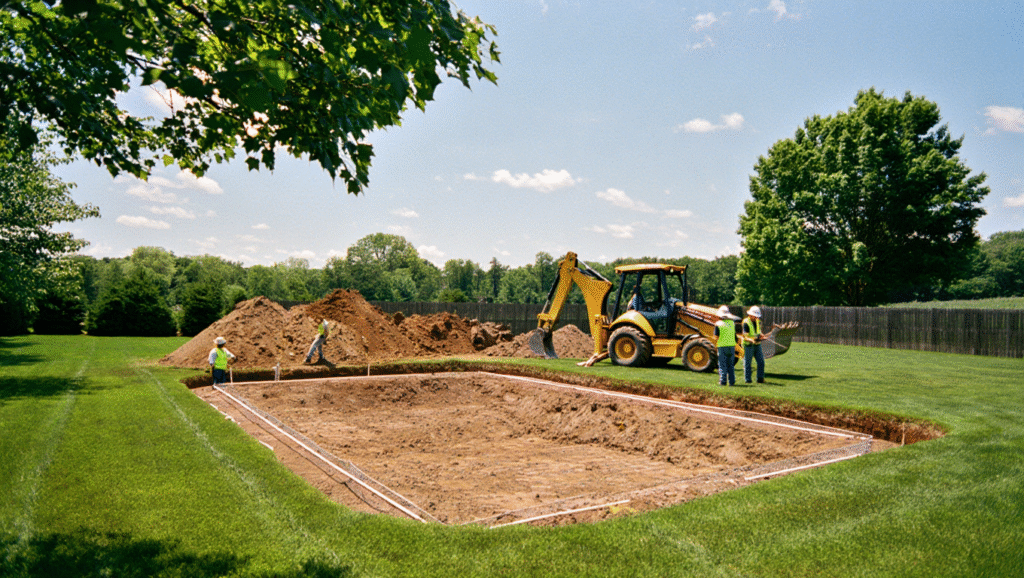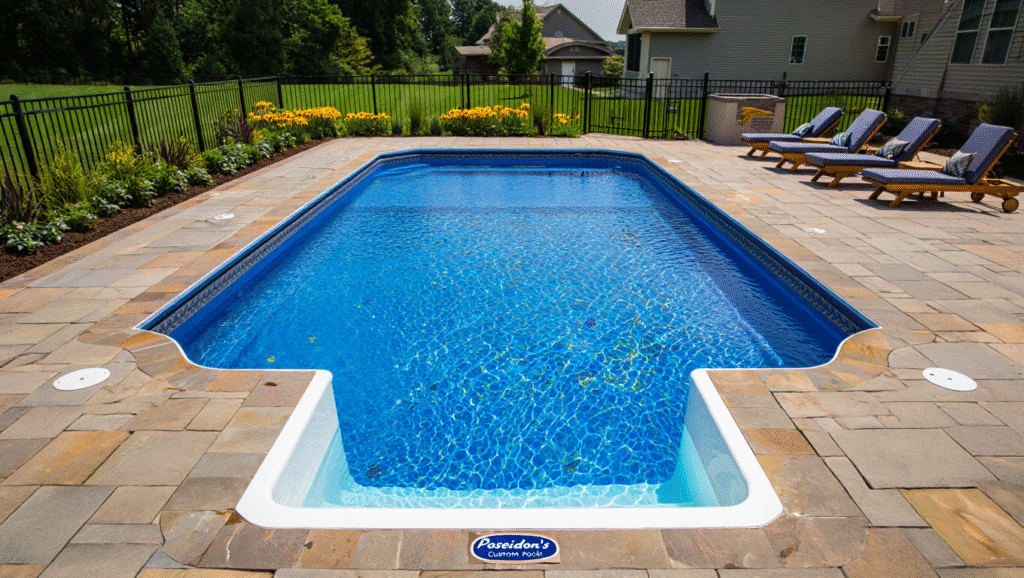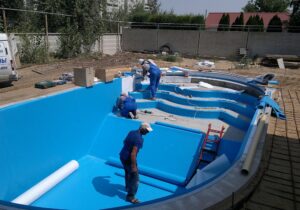Ever dreamed of diving into your own backyard oasis on a hot Pennsylvania summer day? A swimming pool can turn that dream into reality, offering a place to relax, entertain, and make memories with family and friends. In this guide, you’ll discover the complete pool installation process, from planning to that first refreshing splash. Whether you’re a homeowner in Pennsylvania considering an in-ground pool or just exploring options, we’ll walk you through every step with clear, practical advice to ensure your project goes smoothly.

Why install a Pool in Pennsylvania?
A pool isn’t just a luxury—it’s an investment that can enhance your lifestyle. In Pennsylvania, where summers can be warm and humid, a pool provides a private retreat for cooling off. According to National Association of Realtors research, a well-designed pool can boost your property value by up to 7%. Plus, with Poseidon’s Custom Pools, you get tailored designs that match your vision, whether it’s a sleek modern pool or a family-friendly setup with fun features like slides or waterfalls.
Before we dive into the steps, let’s address a common question: How long does pool installation take? On average, in-ground pool installation in Pennsylvania takes 6–12 weeks, depending on factors like pool type, weather, and permitting. Now, let’s explore the process to help you plan your perfect pool.
Step 1: Planning Your Pool installation
The journey to your dream pool starts with a solid plan. This stage is all about defining your goals, budget, and design preferences. Here’s how to get started:
- Set Your Budget: Pool installation costs vary widely. In-ground pools in Pennsylvania typically range from $40,000 to $100,000, depending on size, materials, and features like lighting or heating. Factor in ongoing maintenance costs, like chemicals and cleaning, which average $500–$1,500 per year.
- Choose Your Pool Type: Fiberglass, concrete, and vinyl-lined pools are the most common. Explore pool types to decide what’s best—fiberglass is low-maintenance, concrete offers endless customization, and vinyl is budget-friendly but requires liner replacements every 7–10 years. Poseidon’s Custom Pools specializes in all three, helping you pick the best fit.
- Consider Features: Want a diving board, spa, or LED lighting? Now’s the time to dream big. Features add to the cost but enhance your pool’s functionality and wow factor.
- Site Assessment: A professional will evaluate your backyard for slope, soil type, and accessibility. For example, rocky Pennsylvania soil may require extra excavation, impacting costs.
Pro Tip: Schedule a consultation with Poseidon’s Custom Pools early. Their experts can assess your property and provide a detailed quote, saving you from surprises later.
Step 2: Designing Your Pool
Once you’ve got a plan, it’s time to bring your vision to life. The design phase is where creativity meets practicality. Poseidon’s Custom Pools uses 3D design software to show you exactly what your pool will look like before construction begins.
- Shape and Size: Popular custom pool designs include rectangular for a modern look or freeform for a natural vibe. Size depends on your yard and needs—smaller pools (10×20 feet) suit cozy spaces, while larger ones (20×40 feet) are great for entertaining.
- Aesthetics: Choose tiles, decking, and coping materials that complement your home. Pennsylvania homeowners often opt for natural stone decking for a timeless look that handles local weather well.
- Local Regulations: Pennsylvania requires permits for in-ground pools, and some areas have setback rules or fencing requirements, as outlined by the CPSC pool safety guidelines. Learn more about pool permits and regulations to ensure compliance. Poseidon’s team handles permitting, ensuring compliance with local codes.
FAQ: Do I need a fence around my pool? Yes, Pennsylvania law mandates a 4-foot-high fence with a self-latching gate for safety. Check with your local municipality for specific rules.
Table: Pool Type Comparison
| Pool Type | Pros | Cons | Average Cost |
| Fiberglass | Low maintenance, quick installation | Limited shapes | $40,000–$70,000 |
| Concrete | Highly customizable, durable | Longer build time, higher maintenance | $60,000–$100,000 |
| Vinyl | Affordable, smooth surface | Liner replacements needed | $35,000–$65,000 |
Step 3: Obtaining Permits and Approvals
Before construction starts, you’ll need permits from your local Pennsylvania municipality. This step ensures your pool meets safety and zoning standards outlined in Pennsylvania’s Uniform Construction Code. Poseidon’s Custom Pools streamlines this process by:
- Submitting detailed plans to the local building department.
- Coordinating inspections for plumbing, electrical, and structural work.
- Ensuring compliance with Pennsylvania’s Uniform Construction Code.
Permitting can take 1–4 weeks, so plan ahead. Delays are common in busy summer months, so starting in early spring can keep your project on track.
Step 4: Excavation and Site Preparation
With permits in hand, it’s time to break ground. Excavation is the most exciting—and messy—part of the process. Here’s what happens:
- Marking the Site: The pool’s outline is staked out based on your approved design.
- Digging: Heavy equipment removes soil to create the pool’s shape and depth. In Pennsylvania, rocky terrain may slow this step, but Poseidon’s experienced crew handles it efficiently.
- Debris Removal: Excavated soil is hauled away or repurposed for landscaping, depending on your plans.
Weather can affect this stage. Pennsylvania’s rainy springs may delay digging, so flexibility is key. Expect excavation to take 1–3 days for most projects. Learn how to prepare your yard to make this step smoother.
Step 5: Pool Construction
Now, your pool starts to take shape. This phase varies by pool type, but generally includes:
- Framework: For concrete pools, steel rebar forms the structure. Fiberglass pools are set into the excavated hole, while vinyl pools get steel or polymer walls.
- Plumbing and Electrical: Pipes for filtration and drains are installed, along with wiring for lights or heaters. All work follows Pennsylvania’s safety codes.
- Shell Installation: Concrete is sprayed or poured, fiberglass shells are leveled, or vinyl liners are fitted. This step can take 1–3 weeks, depending on the pool type.
Poseidon’s Custom Pools emphasizes quality, using premium materials to ensure your pool lasts for decades. Regular inspections during this phase keep everything on track.
Step 6: Finishing Touches
Your pool is almost ready! The finishing phase adds beauty and functionality:
- Decking and Coping: Decking materials like pavers or stone are laid around the pool. Coping (the pool’s edge) is installed for a polished look.
- Fencing and Safety Features: A compliant fence and safety covers are added to meet Pennsylvania regulations.
- Landscaping: Plants, lighting, or patios enhance the pool area. Native Pennsylvania plants like black-eyed Susan’s add low-maintenance charm. Check out top landscaping ideas for inspiration.
This stage takes 1–2 weeks and transforms your pool into a backyard centerpiece.
Step 7: Filling and Testing
It’s time to fill your pool! This step involves:
- Filling: Using a garden hose or water delivery, your pool is filled over 1–2 days. A standard 20×40-foot pool holds about 30,000 gallons.
- Water Treatment: Chemicals like chlorine and pH balancers are added to make the water safe and clear.
- System Testing: Pumps, filters, and heaters are tested to ensure everything works perfectly.
Poseidon’s team provides a walkthrough, teaching you how to maintain your pool and operate its systems. For ongoing care, refer to the ultimate pool maintenance guide.
Step 8: Enjoying Your Pool
Congratulations—you’re ready to dive in! Your new pool is a place for summer barbecues, kids’ swim parties, and quiet evenings by the water. To keep it in top shape:
- Test water weekly and adjust chemicals as needed.
- Clean the pool regularly to prevent algae buildup.
- Schedule annual maintenance with Poseidon’s Custom Pools for long-term care.
FAQ: When can I swim after the pool is filled? Once the water is balanced and systems are tested (usually 1–2 days after filling), it’s safe to swim.
Common Challenges and How to Avoid Them
Pool installation isn’t without hiccups. Here are pitfalls to watch for and how to avoid pool installation mistakes:
- Unexpected Costs: Get a detailed quote upfront. Poseidon’s transparent pricing helps you avoid surprises.
- Delays: Start planning in winter or early spring to beat Pennsylvania’s busy construction season.
- Poor Design Choices: Work with experienced designers to ensure your pool fits your lifestyle and property.
Why Choose Poseidon’s Custom Pools?
At Poseidon’s Custom Pools, we’ve been transforming Pennsylvania backyards for years. Our team combines expertise with a passion for creating pools that reflect your unique style. From initial design to final inspection, we handle every detail, so you can focus on enjoying your new oasis. Plus, our commitment to quality means your pool is built to withstand Pennsylvania’s seasons, from hot summers to snowy winters. Learn more about us.

Conclusion
Installing a pool is a big decision, but with the right plan and partner, it’s a rewarding one. This step-by-step pool installation process guide has shown you what to expect, from dreaming up your design to diving in. By choosing Poseidon’s Custom Pools, you’re ensuring a smooth project and a pool that brings joy for years to come. Ready to take the plunge? Get in touch with Poseidon’s Custom Pools today for a free consultation, and share your pool dreams in the comments below!






